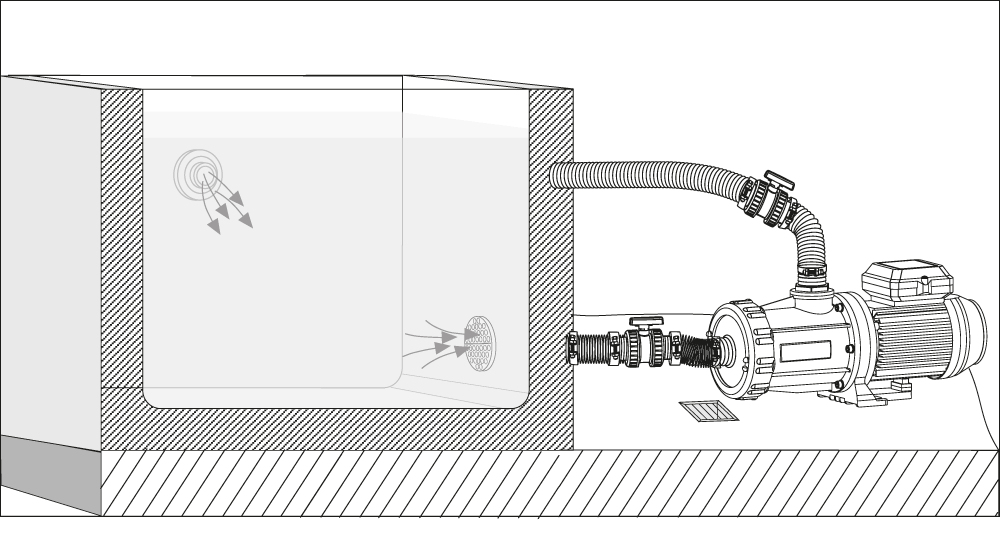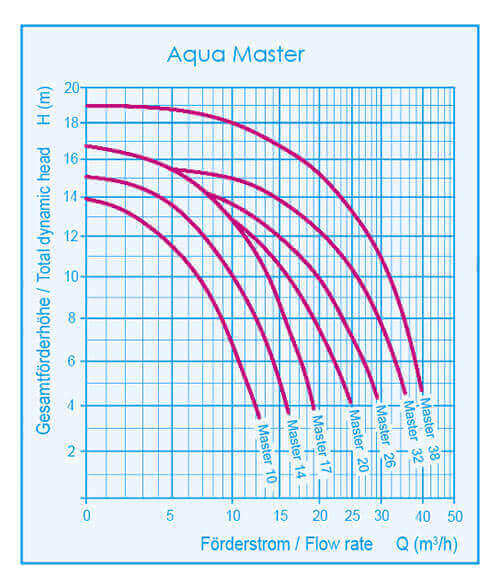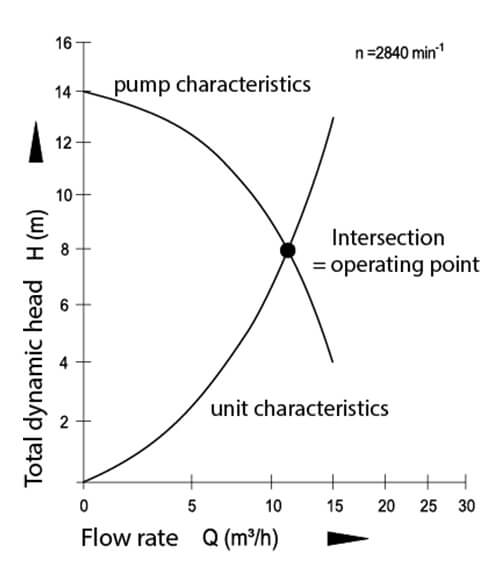If you always want to have clean pool water, it must be filtered by circulating it twice a day. That’s where the efficient filter unit made up of pump and filter come into play. The key to choosing the correct pump is the calculation of the flow rate. Together with the right sand filter, this completes your filter unit.
8 steps to your perfect pump:
- Size: Calculate the pool volume
- Load: How frequently/intensely is the pool used?
- Circulation time: How quickly should the water be circulated?
- Formula: Which pump achieves the appropriate flow rate?
- Location: Is the pump installed above or below ground?
- Pressure loss: What is the required total dynamic head?
- Rate of efficiency: What is the optimum operating point?
- Sand filter: How is the sand filter dimensioned?
1. Calculate the pool volume
To calculate the pool volume you need to have already considered the shape of the pool. We have already reported about the advantages and disadvantages of the various pool types in the Academy entry Which pool type is right for me? You might want to take a quick detour – we’ll wait for you here.
2. Estimate the load
The more frequently the pool is used and the higher the load on the water due to the environment, the faster the water has to be cleaned/treated and the less time there is available to filter the complete volume of the pool.
3. Calculate the circulation time
| Circulation time depending on the load | |||
| Pool volume | in hours (hr) | ||
| minimal | average | high | |
| up to 30 m³ | 5 hr | 4 hr | 3 hr |
| 30 to 50 m³ | 6 hr | 5 hr | 4 hr |
| over 50 m³ | 7 hr | 6 hr | 5 hr |
Larger pools generally aren’t under as much load so a longer circulation time – up to 7 hours – is sufficient. Smaller pools that are naturally subject to higher loads should be circulated faster, complete circulation in 3 or 4 hours. But:
There is always an exception to the rule. If a pool is used more than expected or if unfavourable environmental influences emerge temporarily, the filter should be operated continuously due to the increased load. Above all, the pH value should be monitored and the dosage of disinfection and flocculent should be adjusted.
4. Use the formula
Calculating the flow rate
Assuming you are planning a 5 x 9 m pool, which is 1.35 m deep, your planned pool would be filled with approx. 60 m³ water. (5 m x 9 m x 1.35 m = 60.75 m³). Also assuming average usage/load – and thus a circulation time of 6 hours for this pool – the formula provides the following flow rate: 60 m³/6 h = 10 m³/h. Your pool pump should therefore handle a flow rate of at least 10 m³/h.
Using this table you can determine the required pump performance for the most common pool sizes:
Practical tip: for a steady pool flow and in order to operate a pool robot, the flow rate should amount to minimum 5 m³/h.
5. Define the location
Depending on whether your pool is situated above ground or partially or completely submerged, you will require a non-self-priming or a self-priming pump.
What is the difference? Non-self priming pumps must be installed below the water level so that the water to be pumped can flow into it independently.

This is irrelevant for self-priming pumps. They can be installed above or below the water level, because unlike non-self-priming pumps they can also handle air (and evacuate air independently). Moreover it is also possible to operate manual floor cleaners with these pumps.

6. Calculate the total dynamic head
Now you know what water quantity your pool pump has to handle (flow rate Q = m³/h). Now you have to calculate the total dynamic head (H) in order to learn the second important performance parameter.
H = hgeo + hV (specification in m)
The total dynamic head is taken from the actual geodetic dynamic head (hgeo), in other words from the water level to the highest point in the pressure line plus additional dynamic head (hV) due to pressure and frictional loss in the pipework and resistance in the filter.
7. Determine the operating point
Each pump has a characteristic (pump characteristics). It shows the pump performance per hour (m³/h) and displays it in relation to the total dynamic head (m). Cross the pump characteristics with the unit characteristics and the point of intersection will show the pump’s operating point – the working point with the optimum rate of efficiency for the pump.

Pump characteristics for the Aqua Master self-priming pump range

Point of intersection to show the optimum rate of efficiency for the pump
8. Select a sand filter
The sand filter is responsible for keeping the pool water clean. To do so the pump pushes the water through the sand in the filter vessel (so that dirt and impurities are caught in the sand) and pumps the clean water back into the pool. For this to work, the size of the vessel must be coordinated to match the performance of the pump. Thus the sand filter’s performance (litres per hour) should agree with or be slightly larger than the pump’s flow rate (Q).
Tip for the planning process: The dirt collected in the sand filter must be removed regularly by backwashing the filter i.e. it has to be flushed into the sewage. The diameter of the drainpipes should be large enough to avoid a blockage and the dirty water being fed back into the pool.


Hi there it’s me, I am also visiting this website regularly, this
web site is genuinely good and the people are actually sharing good
thoughts.